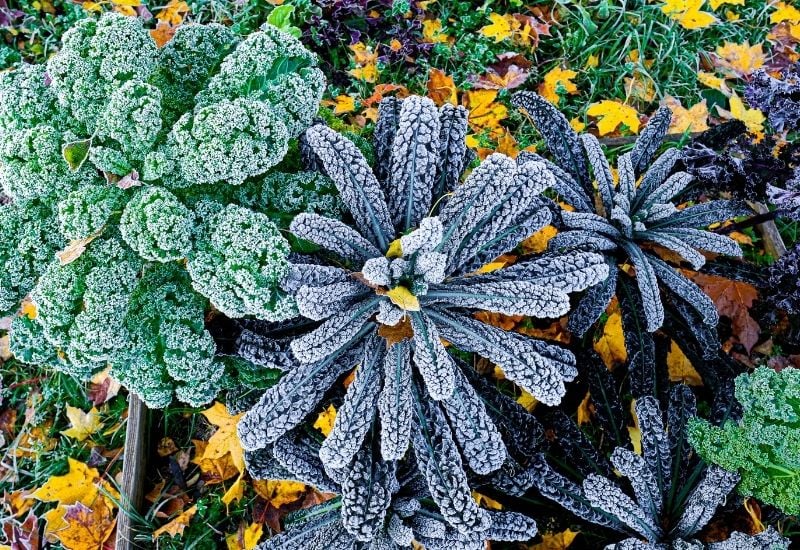
Kale, once an overlooked vegetable, is now enjoying a surge in popularity. Today, kale enthusiasts are on the hunt for diverse varieties, and if you’ve developed a penchant for this leafy green, it might be time to explore different kale varieties for your garden.
Deserving of its newfound fame, kale is a culinary marvel that can be whipped into countless dishes. It’s packed with essential nutrients and boasts impressive cold-hardiness, thriving into the winter in many USDA zones.
Very easy to grow, the kale family showcases an array of plant types, each distinct in size, and shape. Its color palette ranges from the traditional deep green to shades of purple, light green, violet-green, yellow-green, white, and even red.
Let’s learn a bit more about the different types of edibles and ornamental varieties of kale and our favorites for growing in the garden.
What is Kale Plant?
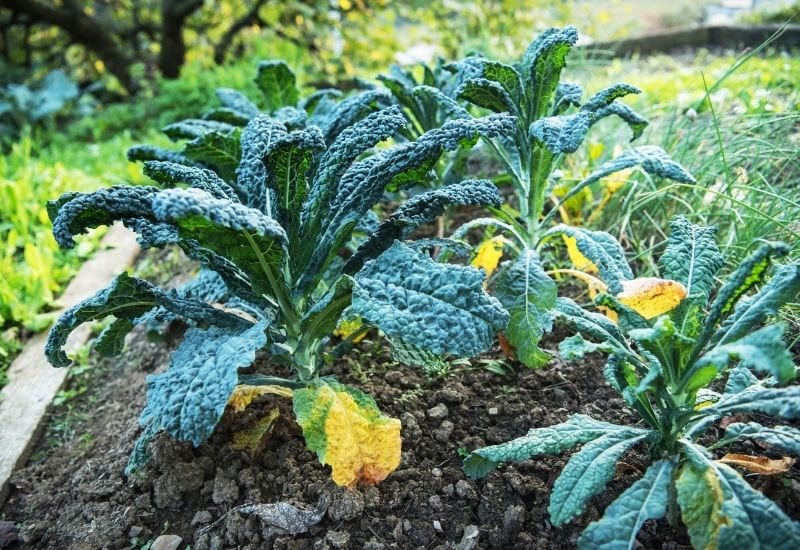
Kale belongs to the cruciferous family, which is the same family that includes cabbage, broccoli, collard greens, and cauliflower. Many people believe that it’s in the same family as lettuce, but it’s a much harder vegetable than lettuce.
Kale is enjoying being all the rage right now, but it has gained popularity for good reasons. It’s rich in vitamins and minerals, such as calcium, folate, and magnesium. Here are some of the vitamins that kale contains:
At the same time, it’s low in calories, contains no fat, and five grams of fiber per one-cup serving. For many people, these are reasons enough to include it in as many recipes as possible.
Why You Should Grow Kale in Your Garden
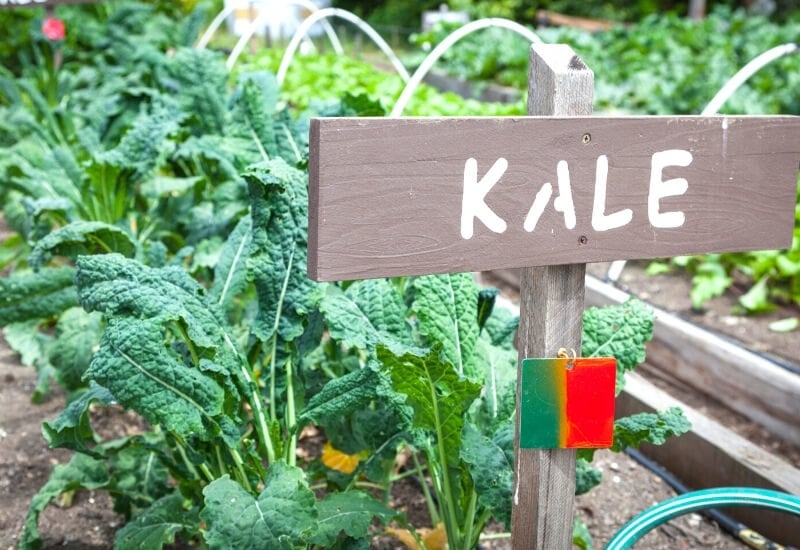
If you’ve never grown kale before, you might wonder why you should even consider growing it in your garden. Does it really deserve a spot in your garden?
Yes! We talked about how healthy kale is for you to add to your diet because it’s full of nutrients and vitamins, but it’s more than that.
Here are some reasons to grow kale.
12 Kale Varieties You’ll Definitely Want To Grow Your Garden
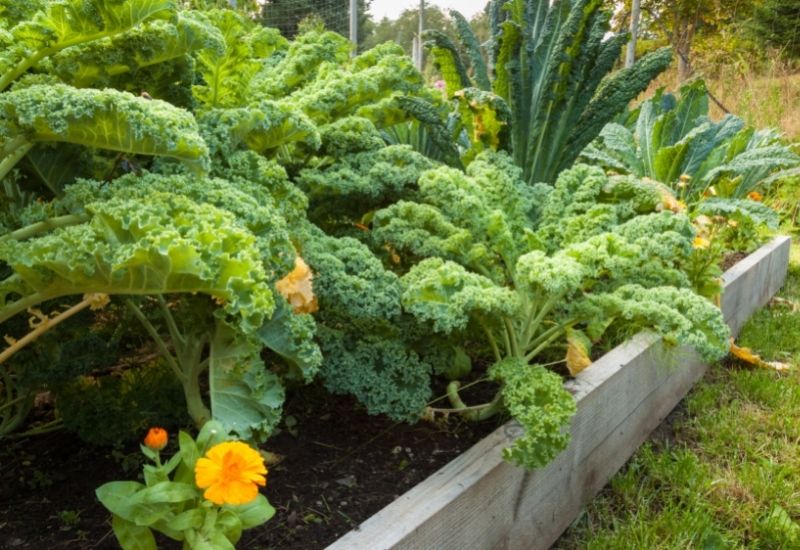
When you go to the grocery store, you typically only see one, maybe two, types of kale, but there are more out there! Each type of kale has a unique look, texture, and taste, and they are all used in different ways in the kitchen.
Let’s take a look at these different types of kale to help you find the ones you want to grow in your garden.
1. Curly Kale
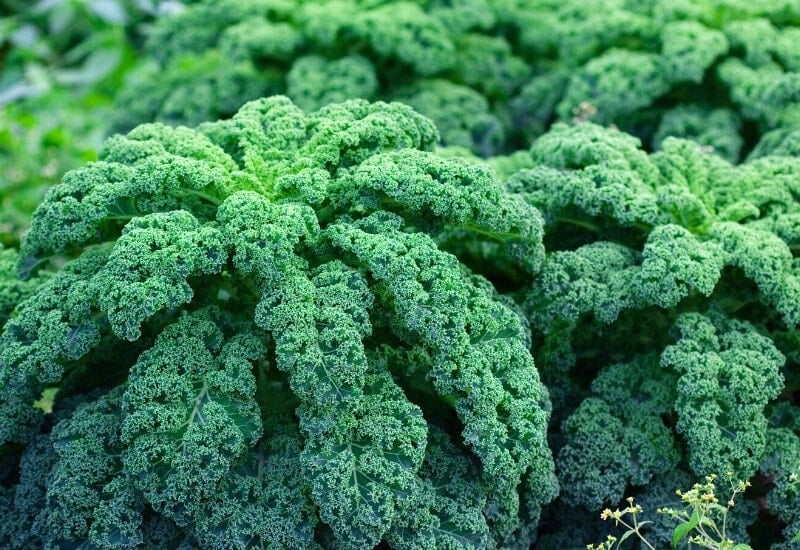
Curly kale is the type of kale that you’ll find at the grocery store. It is typically dark green, but sometimes it could have a purple-tint, and it has tightly wound curls.
Curly kale is one type that can tolerate the cold weather well so long as they grow in full sunlight — a bit of frost on the leaves of this plant help to give them a sweeter taste.
Some people believe that curly kale has a slightly bitter taste with intense notes of pepper. Despite the somewhat bitter taste, it’s a versatile type to grow because it can be used in so many different ways in the kitchen. From smoothies to kale chips and everything in between, curly kale is the most popular choice by gardeners and cooks alike.
If the bitter flavor isn’t something you like, try using curly kale in a stir fry with garlic and olive oil. It can be used in salads next to fruit or a sweet-flavored dressing to help balance it out.
2. Lacinato (Dinosaur) Kale
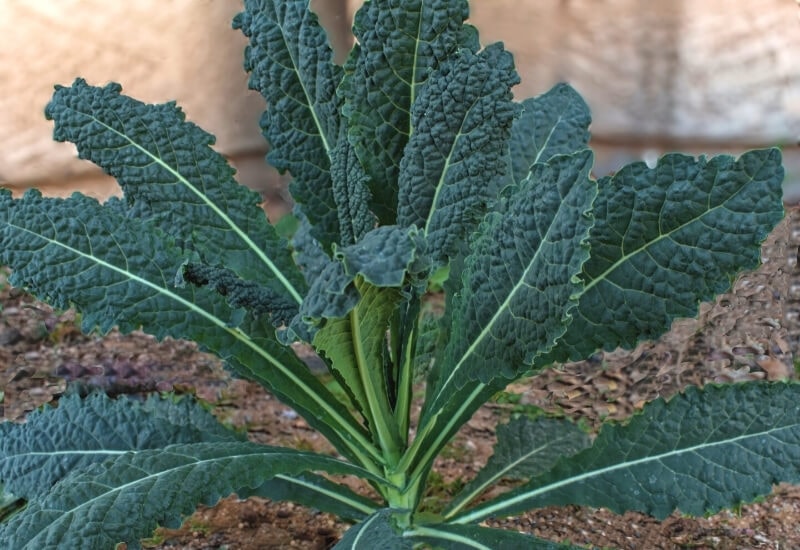
Lacinato kale goes by many names, such as dinosaur kale, and it’s best known for its place in Italian cuisine. It’s considered one of the heartiest types of kale for cooking; it stands up to sauces and doesn’t turn to mush when cooked in a recipe.
Lacinato kale has large, blue-green leaves that measure two to three inches wide. It doesn’t wilt under pressure but instead develops a bit of a crispy texture.
Something to note is that lacinato kale originates from Tuscany, and that’s rare because most kale varieties prefer to have moist climates. Lacinato can survive in hot, dry environments, so it might be a good choice for those who live in southern or southwest states.
If you want a mid-winter staple green, lacinato kale is a great choice. You can add it to your lentil or vegetable soups. At the same time, it works well with other grains or beans, or try tossing some strips into a salad. You’ll find that it works well in nearly any recipe. The leaves stand up well to boiling and braising.
3. Red Russian Kale
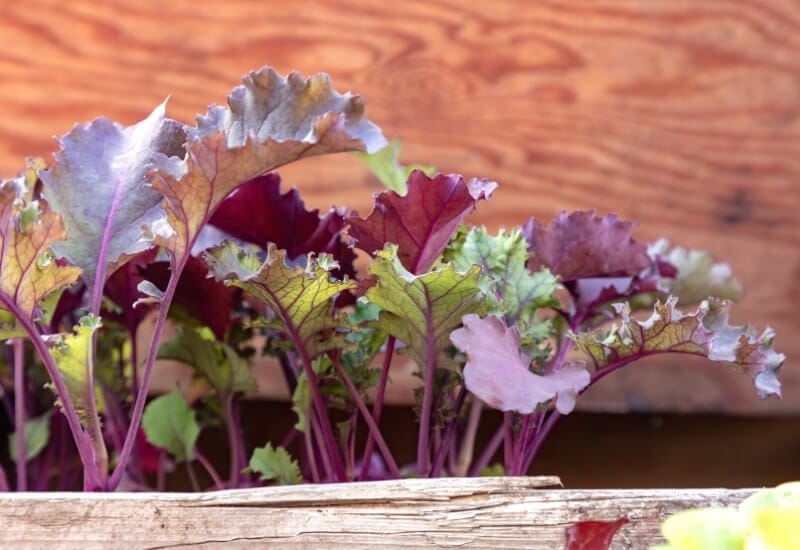
Here is a variety that is larger and not as curly as the standard curly kale. It has a vibrant, reddish-purple color throughout the stems and flat, green leaves that look similar to a large arugula leaf or even oak leaves.
Red Russian kale plants grow faster, typically only 60 days to reach full maturity, and reach 36 inches in height. This plant does grow best in full sunlight, but unless you’re growing in a colder climate, you might not need full sunlight.
You typically won’t find red Russian kale in your local supermarket, but you might be able to find it at a natural food store or your local farmer’s market. It has become a popular choice for gardeners and organic farmers, so even CSA boxes boast red Russian kale.
Gardeners love red Russian kale for a few reasons, but the most noted is that it’s quite versatile. You can start to use the greens in the baby stage or leave them to reach full maturity. That’s up to you. As long as the leaves as firm and vibrant, they’re good to eat.
Compared to other types of kale, red Russian is sweeter and yet more peppery, making it unique and challenging to describe to those who have never tried this delicious green. You can prepare the leaves just like you would any recipe that uses curly or dinosaur kale.
4. Ornamental Kale
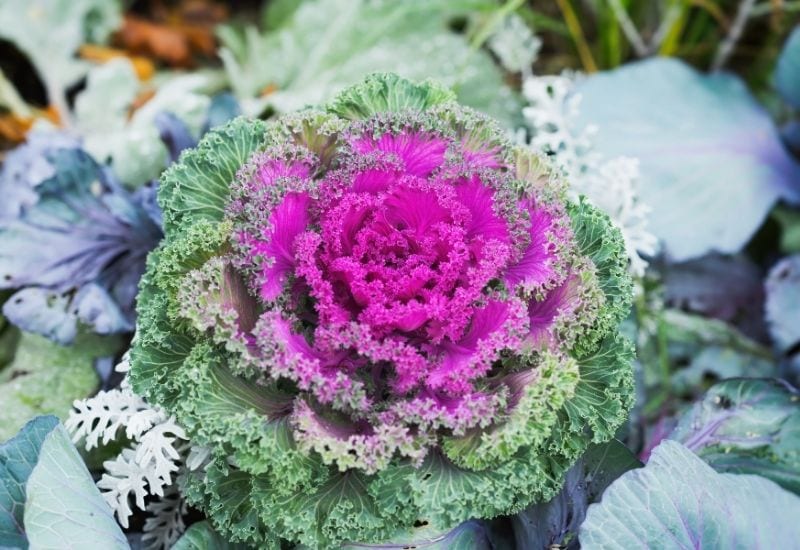
Here is one type of kale that most people prefer to use for decorations. It has a flower-like center of the plant that ranges from a white color to a lighter shade of pink or purple. You can grow these plants in USDA hardiness zones two through 11.
Just because it’s called ornamental kale doesn’t mean it’s inedible – you can still eat it. Most of the time, it’s stuck in the floral part of the garden rather than in your vegetable section. It’s still edible.
So, why is it separated from other types of kale?
Ornamental kale tends to be tougher and less tasty than other types. It looks beautiful growing in your garden or acting the part of a garnish for your meal, but it’s essentially a step up from parsley. That means you could add it to soups or stews for a vitamin boost if you want.
Due to its toughness, most chefs only use ornamental kale sparingly in meals and only in recipes with a longer cooking time to help soften the leaves. This isn’t the type of kale you want to toss in your colorful spring salad.
5. Chinese Kale
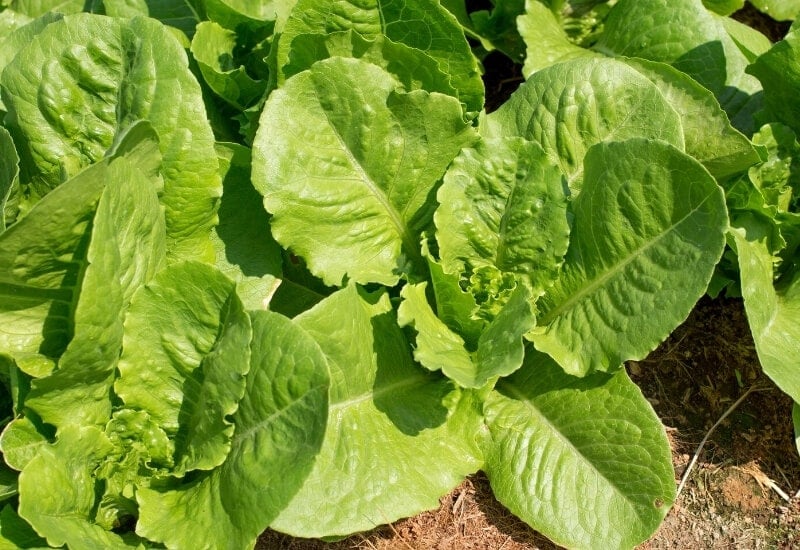
If you put Chinese kale next to other types, you’ll quickly notice how different it looks. Chinese kale looks like broccoli and spinach had a baby with large, flat, glossy leaves and thick stalks. The stalks can be chopped and cooked like broccoli stems.
The most popular way to use Chinese kale is a stir fry, but that shouldn’t be much of a surprise. You could saute it with garlic and olive oil, then add some boiling water and cover while it cooks to help the leaves soften. It tastes great when you add some meat or extra vegetables as well.
The stems have a taste similar to broccoli, so you could use this as a replacement if you run out of fresh broccoli. You could use the stems separately in casseroles or a quiche that calls for broccoli.
6. Redbor Kale
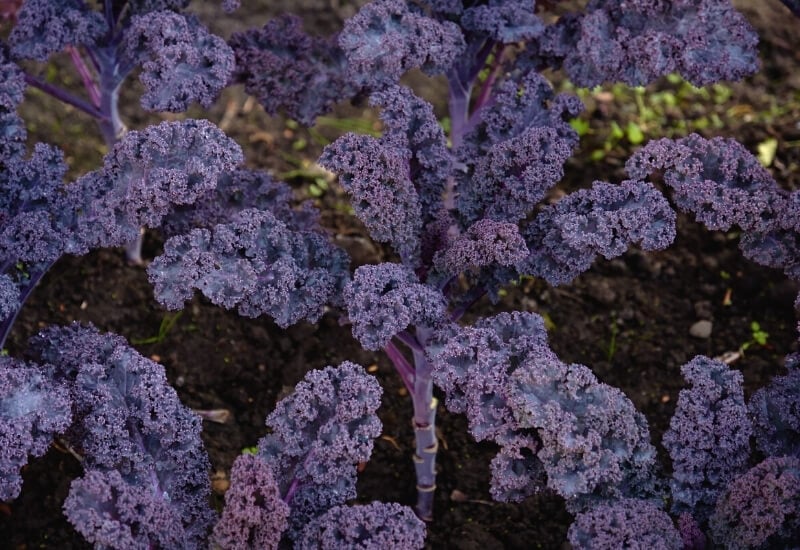
Chances are you’ve never heard of redbor kale, but it’s a beautiful variety that has red, ruffled leaves. You can use it in culinary dishes as well as an ornamental plant. You’ll find that each plant has different red shades, from deep red to red-purplish color with hints of green.
Just because it can be an ornamental plant doesn’t mean it doesn’t taste great – it does. Redbor kale can be roasted; it brings out its flavor. Like curly and lacinato kale, this type works well in most stews and soups, like bean soup, or you can put some of the leaves in a salad. Redbord kale leaves taste even better when you gently massage the leaves with olive oil.
7. Siberian Kale
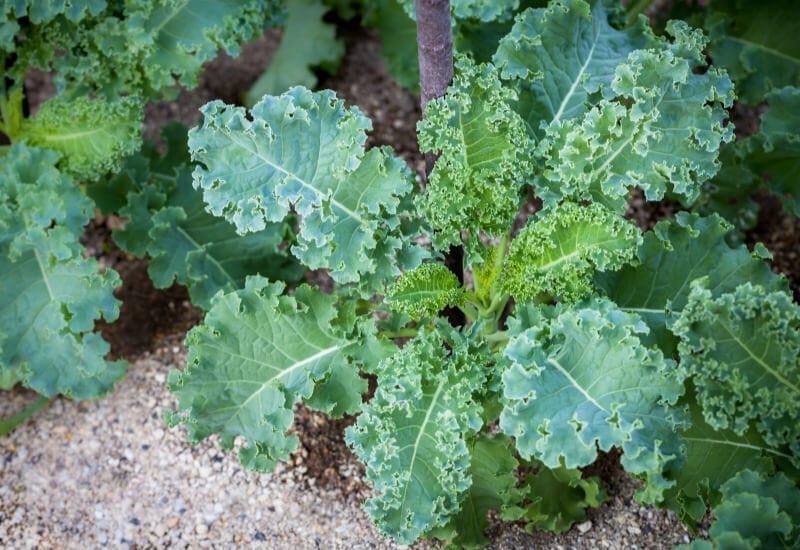
Siberian kale is a type of kale that grows enormous leaves. Typically, it’s only grown in the southern states, typically in USDA hardiness zones eight through ten. If you live in a colder climate, you might be able to grow Siberian kale indoors.
This type of kale grows a bright yellow flower that appears on the plant during the spring. However, it won’t live past the first frost, which is a difference compared to other types of kale that can survive cold weather. Most types of kale are frost hardy, but not Siberian kale, despite being named for a cold region of the world.
Siberian kale is known mostly for its yellow flowers and the oil produced by the seeds. The plant is often called “rape kale,” and the oil is referred to as rapeseed oil. The oil is highly sought after because it’s rich in omega-three and omega-six fatty acids.
This plant has long, thin stems with glossy, small, round leaves. The leaves are firm and have a rubbery texture, wh
8. Red Russian Kale

Here is a type of kale that does well in cold weather and climates. While most kale varieties don’t have issues growing in cold conditions, winter red kale develops a better flavor when exposed to frost. Any gardener living in hardiness zones three through 11 can grow this kale, and it takes 50 to 80 days to reach full maturity.
The plant has the name Red Russian kale because the stem of this plant develops into a bright red color, but the leaves stay green. This variety is excellent for winter gardening. It does have smaller leaves than other types, which are flat and wide with well-spaced teeth.
When you grow winter red kale, you’ll find that it has a tender texture that works well in salads if you use a light olive-oil based dressing. Make sure to dress the salad and eat immediately because these leaves will wit quickly.
9. Walking Stick Kale
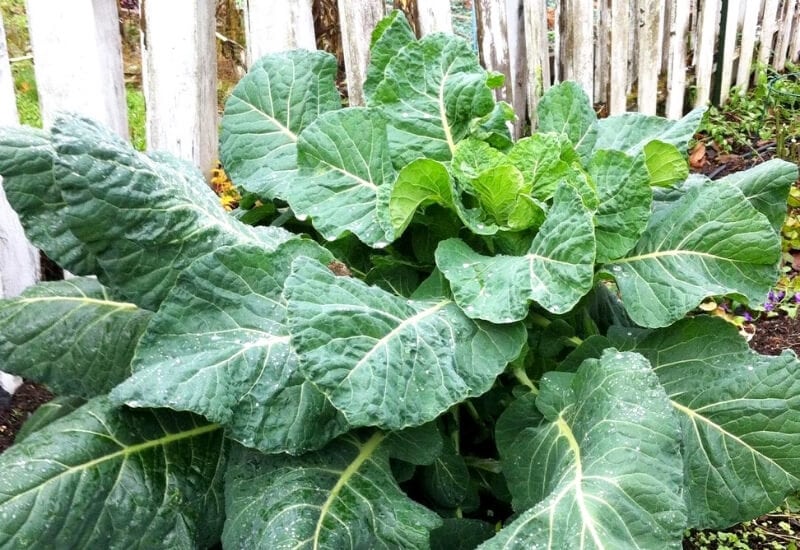
If you want a unique variety of kale to grow, consider walking stick kale. It’s a fantastic variety that can grow up to six feet tall. The name walking stick kale came about because the plant’s stem tends to dry out and be used as a cane or a walking stick.
You can grow this type of kale in USDA zones two through 11, and it doesn’t require any unique or special care even though it reaches large sizes.
10. Scarlet Kale
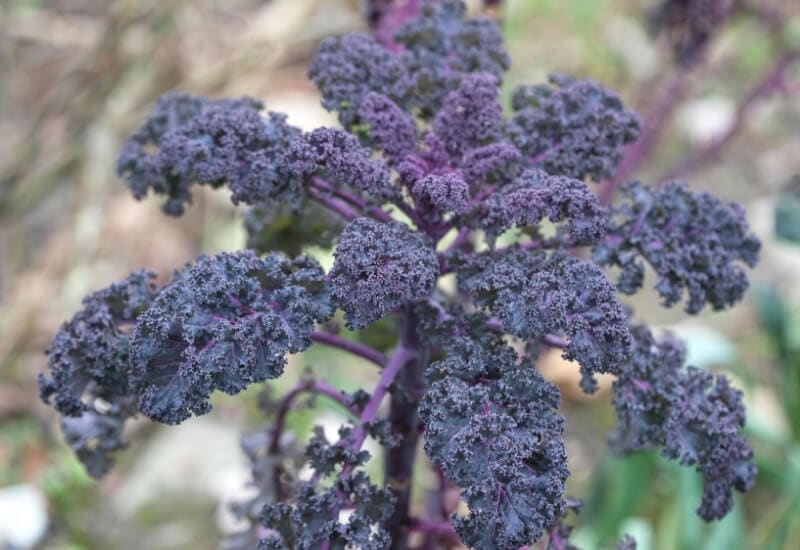
If you want colorful, edible kale to include in your garden, Scarlett kale is a great choice. It has a dark purple color with curly leaves, making it beautiful and edible simultaneously. The curly texture does make it a bit strange when eaten raw, but the texture goes away when you cook the leaves.
You can grow Scarlett kale in almost every hardiness zones, especially if you have full sunlight and neutral soil. Make sure you provide the plant with enough water because wilting will cause the leaves to become bitter.
Scarlett kale matures at a moderate rate, taking around 60 days to reach maturity. The longer you let it grow, the deeper the shade of red will develop, and the flavor turns sweeter and lighter when compared to other types.
You don’t want to miss out on growing this variety in your garden. Who doesn’t love a plant that feeds you while looking beautiful as well? The leaves are firm and crunchy, so they don’t do too well when cooked. It’s best to use these in salads or other raw recipes.
11. Tronchuda Kale
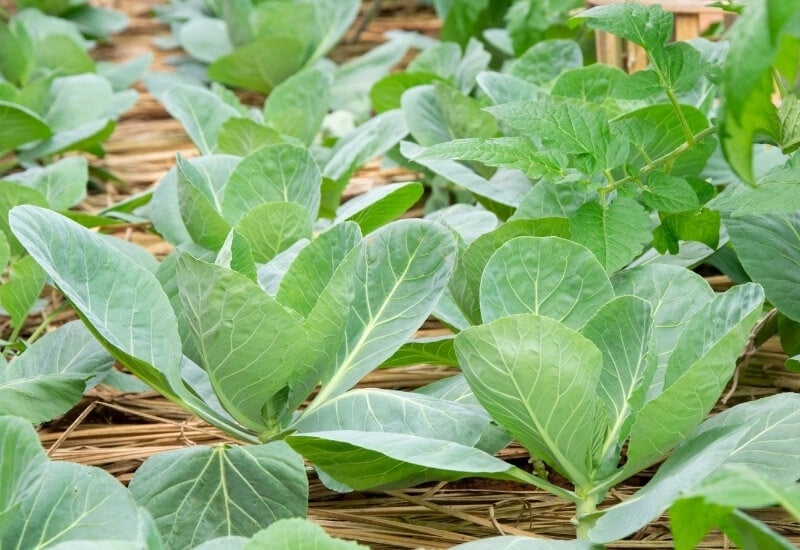
Here is a Portuguese variety of kale that you can quickly tell apart from other types because of its unique look. Tronchuda kale has soft, open, circular, bluish-green leaves along with white or light green stems.
You can grow this variety in both hot and cold climates; it adapts well to most conditions. It typically takes around 55 days to mature.
Tronchuda kale has soft, thick leaves that are great for juicing. Gardeners love it because it’s one of the easiest to germinate and grow. It doesn’t reach tall heights, but it can be up to one foot wide.
Something different about this type of kale is that it tastes slightly like cabbage rather than the bitter taste many people associate with kale. The shape makes this plant look like it’s related to collard greens.
12. Abundance Kale
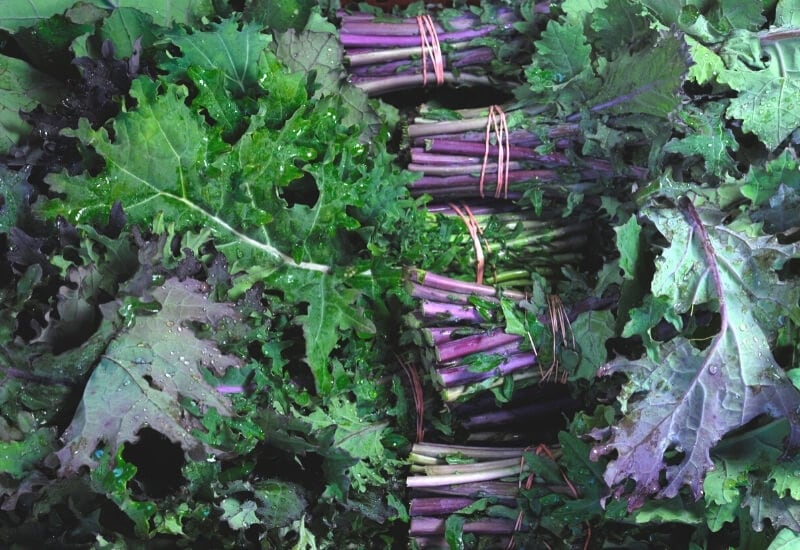
If you want to add another variety of kale that tastes great in salads, try abundance kale. This type is specifically grown to be a microgreen size, perfect for growing in between other plants or tossing into a salad herb garden.
Abundance kale is an excellent option for those who prefer to container garden; it doesn’t take up too much space. This variety receives its name because you can regrow it multiple times per season; that means you can have a significant harvest from one plant.
Try Growing Kale This Year
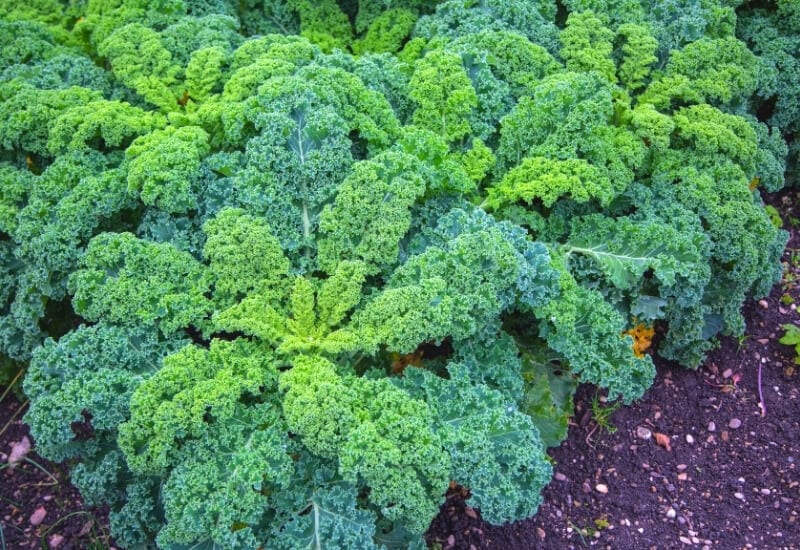
If you’ve never tried to grow kale or other leafy greens in your garden, this is the year to consider growing different types of kale.
Kale is full of rich vitamins and nutrients, and it’s one of the most versatile green. You can juice the leaves, eat them fresh in salads, braise with meat, or toss them into a creamy dish over pasta.
Kale deserves a place in every garden.

Written By
Amber Noyes
Amber Noyes was born and raised in a suburban California town, San Mateo. She holds a master’s degree in horticulture from the University of California as well as a BS in Biology from the University of San Francisco. With experience working on an organic farm, water conservation research, farmers’ markets, and plant nursery, she understands what makes plants thrive and how we can better understand the connection between microclimate and plant health. When she’s not on the land, Amber loves informing people of new ideas/things related to gardening, especially organic gardening, houseplants, and growing plants in a small space.

GIANT KALES
Do you have a source for Abundance Kale seed?